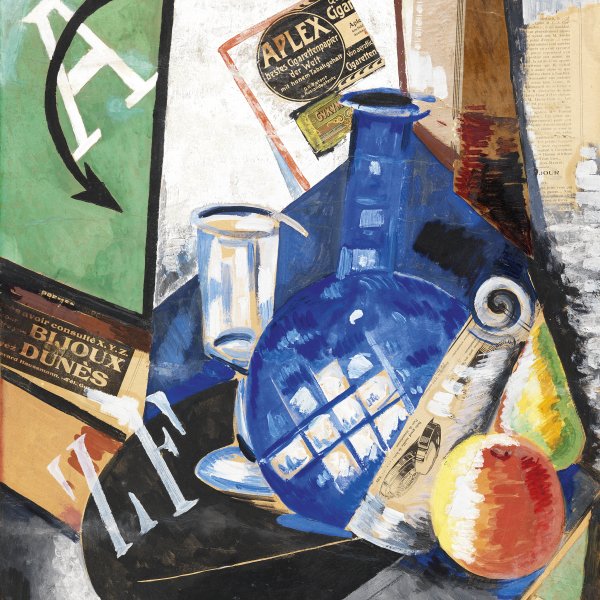Alexandra Exter
The Ukrainian painter Alexandra Exter was a foremost figure in the early avant-garde art of imperial Russia. She came into contact with Cubists and Futurists in Paris and assimilated and reinterpreted these new trends, which she then spread in her country of birth.
After completing her art studies in Kyiv, in 1908 Exter went to live in Paris, where she enrolled at the Académie de la Grande Chaumière. She soon made the acquaintance of Pablo Picasso, Guillaume Apollinaire, Max Jacob and Fernand Léger and espoused Cubism as her own style, although she never renounced colour. She also met representatives of Italian Futurism, such as Filippo Marinetti, whose interest in depicting rhythm and movement she shared. Exter remained in Paris until the outbreak of the First World War, but travelled frequently to Kyiv and Moscow, becoming the disseminator of the new ideas in her country. During this period, she took part in numerous exhibitions in Russia, France and Italy.
In 1914 Exter settled permanently in her native country and was spurred by Malevich’s work to produce her first non-figurative paintings. Her works were shown in exhibitions of avant-garde art such as Tramway V, the first show staged by the Russian Futurists in Petrograd (now St Petersburg) in 1915 and from 1916 onwards she made a significant contribution to modernising theatre stage design through her involvement together with Alexander Tairov in the staging of plays such as Oscar Wilde’s Salomé. Her innovative ideas brought a new dynamism to the design of stage scenery, costumes and lighting — elements that became an essential complement to the plot. She began to design fashion in 1921.
After teaching for a while in Odesa, Exter moved to Moscow in 1921. Despite taking part in major exhibitions such as 5 x 5= 25, along with Alexander Vesnin, Liubov Popova, Alexander Rodchenko and Varvara Stepanova, she did not become affiliated with any particular group. In 1924 she emigrated to Paris, where she spent the rest of her life. During this period, in which she returned to a figurative art centred on still-life scenes, she again collaborated with Fernand Léger and taught at his workshop.





